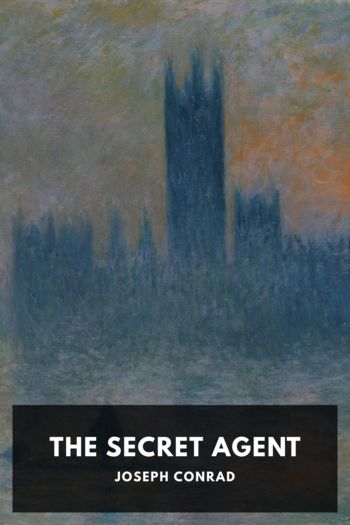Hidden History: Lost Civilizations, Secret Knowledge, and Ancient Mysteries Brian Haughton (an ebook reader .txt) 📖

- Author: Brian Haughton
Book online «Hidden History: Lost Civilizations, Secret Knowledge, and Ancient Mysteries Brian Haughton (an ebook reader .txt) 📖». Author Brian Haughton
© Wessex Archaeology
Detail of the Archer burial with interpretation of the burial goods.
Because Stonehenge is aligned to the midsummer sunrise/midwinter sunset, many reseachers (most notably English-born astronomer Gerald Hawkins) have claimed that a number of astronomical alignments are present at the site. However, subsequent analysis of the data assembled to support Hawkins' theory has shown that many of the supposed astronomical alignments were arrived at by joining together features from different periods, as well as natural pits and holes that were not part of the monument.
The most important thing to remember about Stonehenge is that although it is a unique structure, it was not an isolated monument. Stonehenge
grew to be the focal point of a vast prehistoric ceremonial landscape, as can be seen from the numerous barrow (burial mound) cemeteries that were built around the monument. We have already seen that the Salisbury Plain landscape had been sacred for thousands of years before the building of Stonehenge. But in what sense was it sacred? One theory, put forward by English archaeologist Mike Parker Pearson and Ramilisonina, an archaeologist from Madagascar, used modern anthropological evidence to suggest that for the Stonehenge people, timber may have been associated with the living, and the permanence of stone associated with the ancestors. As there are two important timber henge sites close to Stonehenge-Durrington Walls and Woodhenge-Pearson and Ramilisonina hypothesized a ritual route for funeral processions, which travelled down the River Avon from wood-built Durrington Walls in the east at sunrise, and then along the Avenue up to Stonehenge, the realm of the ancestors, in the west at sunset. This would have been a sacred journey from wood to stone via water, a symbolic passage from life to death. The paucity of archaeological finds from the central area inside Stonehenge certainly suggests that only a few people had access to the monument; not just anyone could walk inside. Whether these selected few were priests, or included the Amesbury Archer, it is difficult to tell. But the stone structure as a metaphor for the ancestors makes a lot of sense, though it is likely that no single explanation can ever do justice to the remarkable people who built Stonehenge.
El Dorado: The Search for the Lost City of Gold
© Carlos A. Gomez-Gallo.
Lake Guatavita, allegedly the scene of the Golded Man Ceremony of the Muisca Tribe.
"Over the Mountains Of the Moon, Down the Valley of the Shadow, Ride, boldly ride," The shade replied "If you seek for Eldorado!" "El Dorado" by Edgar Allan Poe (1849)
A city of untold wealth buried deep in the heart of the Amazonian rainforest, a Mexican king or Gilded Man covered from head to foot in powdered gold, an idea, a quest for a Holy Grail always just out of reach of the
seeker, a destroyer of lives, and a giver of dreams. El Dorado has been and still is all of these things. In the 16th century, Spanish conquistadors undertook journeys fraught with danger in the hope of glimpsing the fabled city of gold, and English explorer Sir Walter Raleigh wrote in 1596 that he knew its exact location. Even 21st century explorers have not given up hope of finding a physical El Dorado, perhaps in the dense jungles of Peru or at the bottom of a mysterious lake in Columbia. Are all these efforts in vain? Is there an El Dorado to find or does the city only exist in the mythology of the Native American peoples of Colombia?
The legend of the Golden Man (El Dorado in Spanish) was well-known in Colombia and Peru when the Spanish arrived in the early 16th century. Some researchers believe that the legend is based on a ceremony performed by an isolated tribe called the Muisca, a highly developed gold-working community who lived around 8,200 feet up in the Andes Mountains. Apparently the ceremony (for the appointing of a new king or chief priest) took place at Lake Guatavita, north of presentday Bogota. At the beginning of the ritual, the new ruler made offerings to the god of the lake, after which the tribe constructed a raft from rushes and filled it with incense and perfumes. The naked body of the new king was then covered with balsam gum, and a fine gold dust spread on top of it. When the chief was ready, the tribe placed him on the raft along with a great pile of gold and emeralds, and four subject chiefs who brought along gold crowns, pendants, earrings, and other precious items. To the accompaniment of music from trumpets and flutes, the raft left the shore and sailed out into the middle of the lake. Once the vessel reached the center, all was silent, and the king and his subjects cast all their riches
into the water as an offering. The new chief was now recognized as lord and king.
John Hemming notes in his book, The Search for El Dorado, that in the 17th century it was common among tribes living along the Orinoco River in Venezuela to anoint their whole bodies with a specially made oil, which served as clothing and protection against mosquitoes. On certain feast days the people covered the oil with various multicolored drawings. Even today, tribes of the Amazon paint their bodies with





Comments (0)